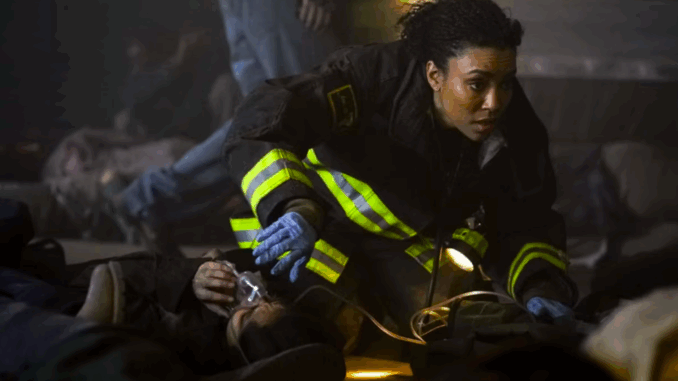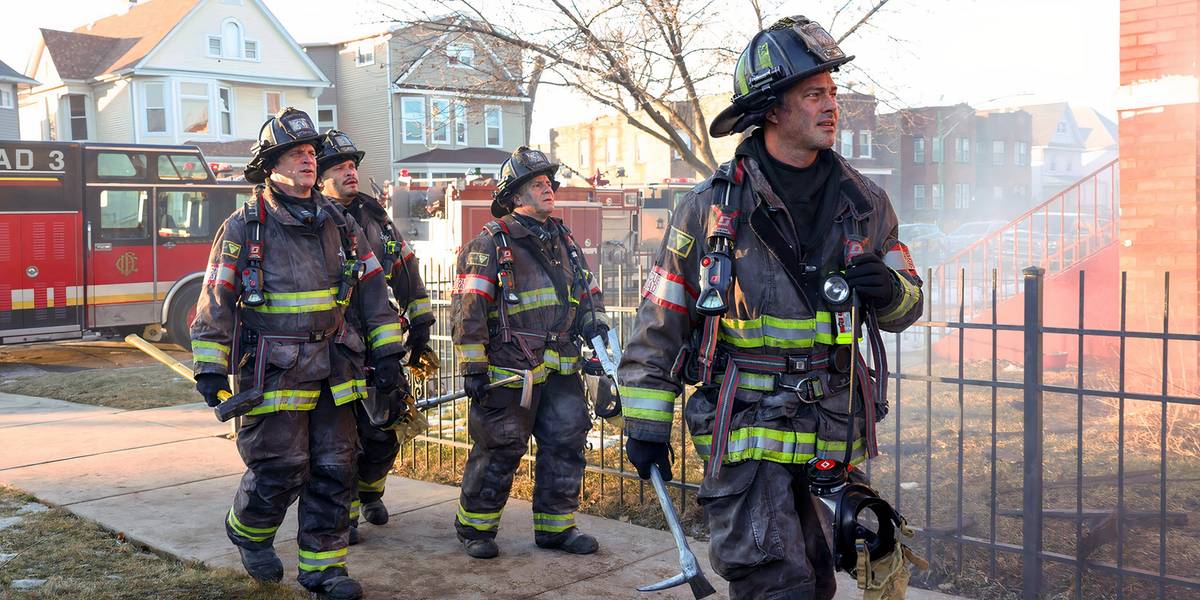
For a show built on explosive rescues and heart-pounding emergencies, Chicago Fire has always known when to take a breath. Beneath the chaos — the infernos, the crushed cars, the adrenaline-fueled maydays — lies something quieter and far more enduring: the humanity of Firehouse 51.
Season 14 has once again reminded viewers that while the show thrives on fire, its heart beats strongest in the stillness. In locker rooms, kitchens, and hospital waiting rooms, Chicago Fire captures something rare for a procedural drama: the emotional cost of courage.
The Pause Between the Sirens
This season, we’ve seen fewer sweeping speeches and more subtle, human moments. Gallo staring silently at a photo of Hawkins before heading out on a call. Violet lingering just a second longer at the ambulance bay after a tough save. Herrmann quietly refilling coffee mugs after a near-tragedy. These are the moments that linger — not because they’re flashy, but because they’re real.
One standout scene came when Boden, alone in his office after a particularly brutal shift, pulled out an old box of commendations and just sat with them. No music swelled. No words were spoken. The moment said everything. It was a reminder that leaders carry the weight of not just decisions, but memories.
Love, Loss, and the Kitchen Table
The firehouse kitchen table has always been the heart of Firehouse 51. It’s where arguments erupt, confessions are made, and healing begins. This season, that table has borne witness to some of the most vulnerable conversations on network television.
When Violet finally opened up about the emotional toll of losing Hawkins, it wasn’t in a dramatic breakdown — it was a late-night talk with Brett (before her departure), over half-eaten pizza. That scene wasn’t just about grief; it was about how women in first responder roles hold each other up in a world that often expects them to stay silent.
Gallo’s struggle with identity and future direction has also played out not in therapy offices or explosive subplots, but in quiet interactions — with Cruz, with Herrmann, with himself. He’s a firefighter at a crossroads, and the show trusts us to sit with that uncertainty, rather than rushing to resolve it.
Brotherhood in the Bunkroom

For a show that wears its heart on its turnout gear, Chicago Fire rarely overplays its emotion. Nowhere is that more evident than in the bunkroom, where characters go not just to sleep, but to think, to escape, to find comfort.
A recent scene between Ritter and Cruz, in which Ritter wrestled with the fallout of a failed rescue attempt, felt especially poignant. Cruz didn’t offer a big speech — just presence. He sat on the opposite bunk, nodded, and let the silence do the work. For viewers who’ve followed these characters for years, that moment spoke volumes.
It’s in the bunkroom that grief lingers long after the alarms stop. Where relationships begin and end. Where dreams are questioned and reimagined. For a show with so many moving pieces, it’s these four walls that often feel most sacred.
Beyond Romance: Emotional Intimacy That Lasts
While Chicago Fire has its fair share of romantic tension — and Season 14 has certainly kept fans guessing — it’s the platonic bonds that offer the deepest resonance. Casey and Severide. Brett and Violet. Cruz and Gallo. These aren’t just work partnerships; they’re chosen families.
Take Violet and Boden, whose quiet mentorship dynamic has grown stronger this season. When Violet was passed over for a leadership opportunity she’d been quietly hoping for, Boden’s simple affirmation — “Your time is coming” — carried the weight of ten seasons of earned respect.
These connections don’t rely on backstory montages or overexposition. They’re built through glances, shared memories, and the kind of trust that only comes from facing fire together.
Why These Moments Matter
On paper, Chicago Fire is a show about emergencies. But its greatest strength lies in its restraint. It knows that what happens after the fire — in the silence, in the mess, in the aftermath — is often more powerful than the blaze itself.
These quiet moments don’t just humanize the characters; they elevate the show. They allow us to see the full picture of what it means to serve, to lose, to love, and to keep going even when the alarms are off and the lights are low.
Because the truth is, firefighting isn’t just about the fires. It’s about what happens in between. And in those in-between spaces, Chicago Fire becomes something extraordinary.
